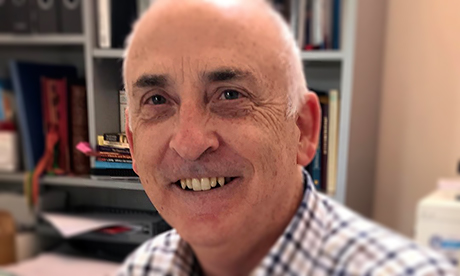The recent television reporting of exorcisms and potential abuse by a fringe religious group in the Diocese of Christchurch is deeply disturbing on several levels.
Poor Church communication is in the spotlight.
The nub of the issue is why a fringe group, that does not belong to the mainstream of the Church and does not follow the ordinary form the Mass promuligated by Pope Paul VI in 1969 (Novus Ordo) is permitted to perform any sacrament, let alone a sacramental like a “major exorcism”?
Why did a Bishop of Christchurch give permission to this fringe group to perform exorcisms?
Why, in light of Pope Francis’ recent tight restrictions on the old Latin Rite has the permission to perform the old Latin Rite not been withdrawn from this group?
Exorcism
The distinction between a “simple form” of exorcism, such as the one performed in the Rite of Baptism or when blessing ourselves with holy water, and the more elaborate “major” or solemn form used in sacramental exorcisms, has not been made clear.
Due to this lack of clarification, exorcism has been trivialised, along with the serious issue of potential religious or spiritual abuse.
Now we have a situation where people have heard about exorcism and abuse in the same sentence and wonder what is going wrong.
As a point of teaching, it is important to clarify the major or solemn form of exorcism is only performed by a priest who has the explicit permission of the bishop.
No ordinary priest is permitted to perform the solemn form of exorcism.
The priest chosen for this sacramental must be judged against external criteria before being permitted to perform a solemn or major exorcism. The priest must proceed with caution, follow the strict rule laid down by the Church and be in regular contact with the diocesan bishop.
The ritual for this sacramental is found in the Rituale Romanum.
The rite is used to protect a person or object against the power of evil or withdraw the power of evil from a person.
The solemn rite of exorcism must not take place where there is a physical or psychological illness. These illnesses are to be treated through medical science, and engaging in the solemn form of exorcism where it is not warranted is just a return to magic or witchcraft.
NZ Media
The trivialisation of such an important matter by TV journalists shows the sorry state of journalism in New Zealand.
When allegations of ritual abuse are juxtaposed with the nonsense of finding out where the best-fried chips are found, it trivialises something very serious.
Add to this the expressed bias of the main presenter regarding his own Catholic upbringing, and one is left saddened that New Zealand seems to have few informed investigative journalists worthy of the title.
New Zealand Bishops’ Conference’s Response
The trivialisation by society’s media of potential spiritual or ritual abuse was not helped by the communications response of the New Zealand Catholic Bishops’ Conference.
In this particular case, a prior communication informing clergy and other diocesan and school leaders of the programme’s airing was sent, merely saying that the programme was being aired and that Church representatives had engaged with the journalists.
It was not very helpful, and we still do not know what the Church representatives said to the journalists.
Unlike other recent communications from the Bishops’ conference, this one did not forbid recipients from publishing its contents. Nor did it slander a journalist.
The Catholic Church needs to be able to speak clearly and professionally for itself in these matters.
In this instance, the lack of Bishops’ Conference communication; its silence left those interviewed to explain the situation when they lacked a working knowledge of the Church, theology and practice of the solemn rite of exorcism.
More generally, the situation shows the paucity of theologically educated people employed by the Bishops’ Conference and available to Catholics and local media.
It reveals the lack of skilled communicators who are able to intelligently explain the nature of the sacramental of exorcism and the relationship of the fringe Christchurch sect to the Catholic Church.
Overall, the approach of the Bishops’ Conference highlights the mentality that has landed the Church in the scandal of the abuse of minors and others.
Through its lack of communication, the Bishops’ Conference seems to suggest it is incapable of addressing issues in adult ways to adult believers and questioners alike.
In this, the Bishops’ Conference is poorly served.
As Catholics and members of civil society, we must ask:
- Why were there no informed commentators from the Catholic Church?
- Where was an intelligent and informative press statement from the Bishops’ Conference before the programme aired?
- Why was an intelligent and informative follow-up not issued?
- Why didn’t the Bishops Conference issue a general press release to balance the television reporting and inform people of the complexity of the issue?
One of the Church’s roles is to communicate and engage constructively in dialogue with society.
Where religious authorities do not take up their role of engagement with Catholics and society’s media, we are all prey to uninformed journalism.
In times when the Church, its practice and indeed Christianity is not as familiar as it once may have been, and when it is in the spotlight for sexual abuse, the onus is on the Church to communicate effectively.
As instanced by this example, the lack of proper communication increases the likelihood of the Church giving scandal to the Catholic faithful, other Christians and those who see Catholicism as a risk to public safety.
- Joe Grayland is a theologian and a priest of the Diocese of Palmerston North. His latest book is: Liturgical Lockdown. Covid and the Absence of the Laity (Te Hepara Pai, 2020).
News category: Analysis and Comment, Great reads.




